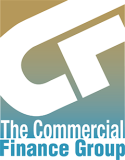Offering your growing business with crucial working capital to expand operations or stock additional inventory is what we specialize in here at The Commercial Finance Group. We have a unique and interesting approach to small business lending that you can learn more about here. By offering lines of credit to small businesses without the delay of traditional banking institutions, you’ll get the funds you need to make things happen for your business, and fast.
As a hard-working small business owner, if you’ve done some research about lines of credit for your company, you might be a little confused about some of the options out there. In this blog post, we’re going to take a close look at some of the options that are available to obtain a small business line of credit that may or may not be compatible or ideal for the situation that your business is in. Let’s take a look at how these different lines of credit options fare against one another.
Why Lines Of Credit Can Be Ideal
First of all, let’s briefly touch on why lines of credit can be such an attractive option for business owners. Flexibility is an aspect of a line of credit that comes to mind. While your typical term loan will give your company a lump sum of cash to use (and to pay back over time), a working line of credit is more like a reserve pool of a set amount of capital. So, you can draw capital up to that certain maximum when you need to, and conveniently, only pay interest on the amount that you actually withdraw. So, as soon as you pay back what you owe, you’ll have that maximum back at your disposal again.
So in short, a working line of credit for your small business acts as a safety net for it. And, unlike what people typically think of as a conventional revolving line of credit, like business credit cards, a line of credit will allow your company to have access to cash and often at lower rates than credit cards. Now, let’s actually look a few different options for lines of credit.
A Traditional Line Of Credit
A traditional line of credit is typically oriented toward experienced business owners with proven, successful business models. This makes sense seeing as the credit maximums are sizeable, the rates are lower, and the requirements demand higher credit scores and annual revenue reporting. In other words, this line of credit is for responsible business owners who have proven to be fiscally responsible and show promise to continue doing so. Generally, traditional lines of credit come from the bank that houses your business bank account.
Compared to a term-loan of a similar size, a line of credit might have a lower interest rate and a lower closing cost. However, this will also come with a substantial interest rate hike if you choose to overdraw your account or fail to repay what you’ve withdrawn. So, if you’re a small business owner who’s taking out a line of credit, you’ll be spending that flexible cash on things like seasonal business expenses, payroll, and other operational costs. Other things to spend your line of credit on include sudden business opportunities and insurance against emergencies. Think of this as a ‘capital cushion’ that’s there for you when you need it the most.
A Short-Term Line Of Credit
The difference between a short-term line of credit and a traditional line of credit is similar to that of a short-term loan and a longer-term online loan. So, a short-term loan or line of credit tends to have a higher interest rate, a lower credit maximum, a faster turnaround time, and more relaxed application requirements. Unlike something like a traditional line of credit, a short-term line of credit is typically offered by alternative lenders as opposed to traditional banking institutions. Keep in mind that the point here isn’t that one is necessarily better than the other – they just appeal to different business owners in different situations.
Business owners with things like lower credit scores, smaller annual revenues or a newer business might only qualify for a short-term line of credit, at least initially. Although short-term lines of credit tend to be more expensive, the value in this line of credit is that it gives younger businesses the opportunity to maintain a flexible pool of capital.
An Equipment-Backed Line Of Credit
This type of line of credit goes beyond short-term and traditional options. This is a collateral-based loan solution that small business owners can look into. This collateral-based business line of credit is secured by – you probably guessed it – business equipment.
An equipment-backed line of credit works through asset-based lenders like the team at The Commercial Finance Group. These asset-based lenders care more about your future prospects than they do about your past borrowing history, or at most, they’ll care the same amount about each of them. So whatever necessary equipment that you acquire for your business like an espresso machine, industrial printer or power washer is backed by your lender. Your credit lender will hand you a line of credit based on the value of these necessary items.
As a plus to business owners, this type of credit option typically has more relaxed requirements even if the maximums and interest rates do not dip or fluctuate. This is, however, at the cost of a lien or claim to ownership in the event of loan default on your new equipment. In other words, lenders are relying on the value of your equipment or your inventory, as opposed to your borrowing history, in order to feel confident about the loan.
An Invoice-Backed Line Of Credit
This is where our asset-based loans truly shine here at The Commercial Finance Group, because we use your financial invoices as collateral for your working line of credit. Also known as invoice financing or accounts receivable financing, this type of line of credit works differently than the other three types mentioned above.
Sometimes, customers or vendors might take a long time to pay you back, but you can’t just sit around and twiddle your thumbs until the payments finally come through. Rather, you need those funds sooner than later. Well, instead of relying on short-term loans to cover your operating costs or digging into your business savings, you can actually get these invoices paid right away with an invoice-backed line of credit. Though, you’ll have to shoulder the costs of the speed and efficiency of this type of business loan.
An invoice-backed line of credit concerns the value of your invoices, which then determines your credit maximum. Then, you can draw capital as you see fit as opposed to relying on your customers and vendors to come through with their valued payments on time. So as your invoices increase, you then have access to more cash from the line of credit.
Get In Touch With CFG To Learn More About Asset-Based Loans
If an asset-based line of credit secured through your invoices sounds like a viable option for your small business, get the details you need through our small business lending experts today at The Commercial Finance Group. Visit here for more information on asset-based lending. We look forward to hearing from you!







